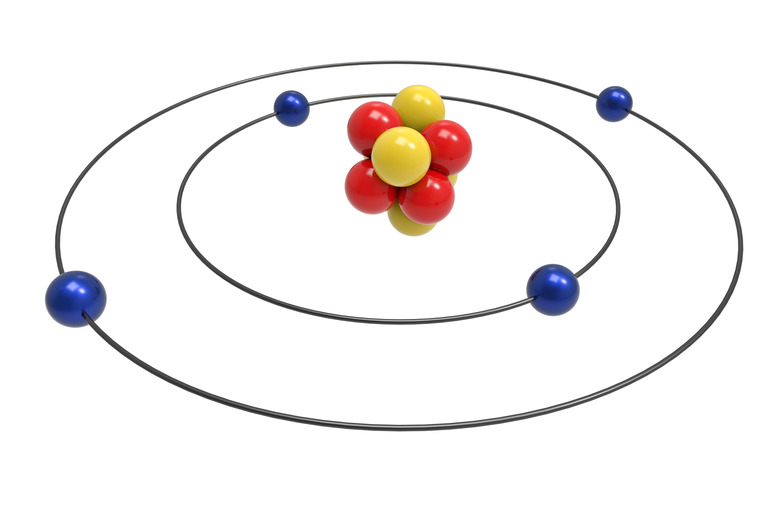How To Count Atoms In Chemical Formulas
Chemical formulas describe the type and number of atoms within a compound. The molecular formula lists the symbol of each element within the compound followed by a number (usually in subscript). The letter and number indicate how many of each type of element are in the compound. If there is only one atom of a particular element, then no number is written after the element. Certain groups of elements, such as polyatomic ions, may be enclosed in parenthesis to indicate that these atoms act as a group. The number of these groups is then indicated by a number (again, usually in subscript) after the closed parenthesis.
Step 1
Locate the elements in the chemical's molecular formula. These are represented by their symbol. For example, the chemical formula for ammonium phosphate is (NH4)3PO4. The elements in this compound are nitrogen (N), hydrogen (H), phosphorous (P), and Oxygen (O).
Step 2
Add a subscript one for any element that does not have a subscript number already. In ammonium phosphate, the nitrogen and oxygen have no numerical values. By convention, no number is added if there is only one atom of the element in the formula. Adding a value of one to these elements will remind you to count them when adding the number of atoms.
Step 3
Add the subscript numbers within any parenthesis. Then multiply by the value of the subscript located after the closed parenthesis. In ammonium phosphate, the NH4 is enclosed in parenthesis. The sum of the atoms within the parenthesis is five. The number three after the closed parenthesis indicates a total of three ammonium groups within the compound. Since each group has five atoms multiplying three groups by five atoms produces 15 atoms.
Step 4
Add the subscript numbers for all elements located outside any parenthesis. In ammonium phosphate, the PO4 is written outside the parenthesis. The total number of atoms for this group is 5 (1 P + 4 O = 5).
Step 5
Add this sum to the product of the parenthesis to determine the total number of atoms in the chemical formula. The total number of atoms in ammonium nitrate is 3(1 N x 4 H) + 1 + 4 = 20.
Things Needed
- Pencil
- Paper
- Molecular formula of a compound
References
Cite This Article
MLA
Chandler, David. "How To Count Atoms In Chemical Formulas" sciencing.com, https://www.sciencing.com/count-atoms-chemical-formulas-5752863/. 13 March 2018.
APA
Chandler, David. (2018, March 13). How To Count Atoms In Chemical Formulas. sciencing.com. Retrieved from https://www.sciencing.com/count-atoms-chemical-formulas-5752863/
Chicago
Chandler, David. How To Count Atoms In Chemical Formulas last modified August 30, 2022. https://www.sciencing.com/count-atoms-chemical-formulas-5752863/
